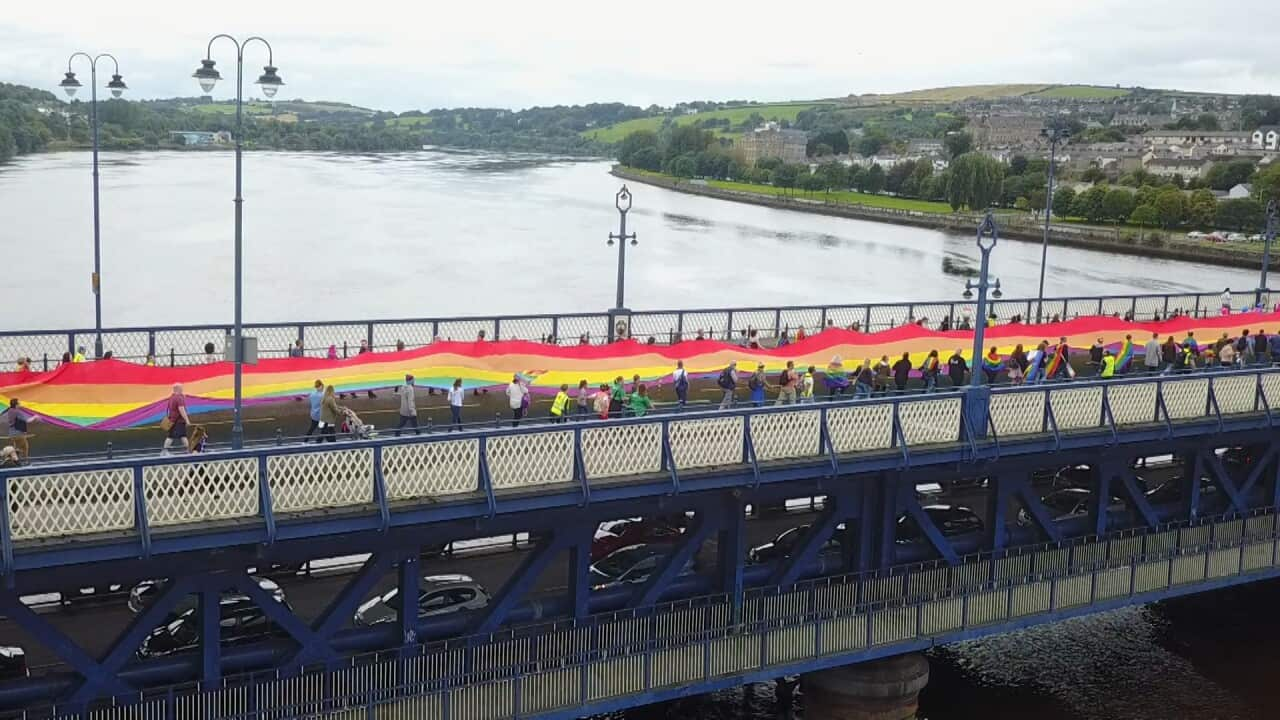Ireland is unbelievably green. A flat emerald landscape doodled on with thin squiggles of road, which give way to tiny and ancient little towns.
Post office, town hall, graveyard, churches – so many churches. Stone walls, stained glass, and steeples make their lofty entreats to heaven.
When this conservative, largely Roman Catholic country voted ‘yes’ to same-sex marriage two years ago, some people – myself included – were surprised.
The Republic of Ireland showed the world that it was forward-looking, and no longer so tightly-shackled to religion. (or, the voting public that voted) said ‘yes’, and anyone you ask will tell you that .
But what about the 38% that voted ‘no’? How has life in Ireland changed for them?
I last week, to see how voters on both sides were settling into the new reality – and what Australia might be able to learn from the Irish process, two years on.
The Republic of Ireland was the first and only country to put same-sex marriage to public vote. Australia will be the second – although here it’s not officially a ‘vote’ but a non-binding postal survey. Despite misgivings on both sides about the propriety and method of the Australian plebiscite – it will give Australians the same opportunity to show the world where we stand as a society on same-sex marriage.
In Australia, as in Ireland, the issue ignites fervour on both sides.
Of course, a successful ‘yes’ vote doesn’t mean the opinions of the ‘no’ camp simply disappear. Both sides of the debate in Ireland spoke of the referendum process intensifying their feelings. Things got nasty, and many in the LGBTQI community spoke of the unfairness of the majority being allowed to vote on the rights of a minority. They say it was an incredibly stressful time, but that the upside to a public vote was a feeling of acceptance, not just in the eyes of the law but in wider society.
Those in the ‘no’ camp bemoaned what they saw as a fashionable movement riding roughshod over the institutions and beliefs they held dear. They believe their arguments were drowned out by a surge of opinion and media from the other side – and say they believe the debate in Australia, so far, is more measured and reasoned.
Like the religious divide that defined Ireland for so many years, same-sex marriage is theoretically ‘solved’ – but in reality emotions still run deep.
To make things more complicated there are other ‘camps’ on this tiny island – those that the same-sex marriage referendum didn’t affect, and those who are still fighting for their position on the issue. In UK-governed Northern Ireland, same-sex marriage is still illegal. The conservative Protestant church and its representatives in local government want to keep marriage as between a man and a woman, while the LGBTQI community want the same rights as their counterparts across the border. that most of the population is in favour of same-sex marriage, but churches and politicians are holding the status quo – for now.
In the misty grey towns of Londonderry and Belfast, we visited Pride parades and LGBTQI support centres, where people told us they’d love marriage reform in the country – but not by public vote, thank you very much.
“I can’t believe we’re still talking about this,” one same-sex couple told me. “Let the government just pass this and get it over with.”
It’s unlikely that it’ll be that simple for Northern Ireland, and we know it won’t be that simple for Australia, either. In the next month or so, debate will rage, and passions will ignite.
Whatever happens, the vote is likely to be close – which means that whichever side wins, there will be a fair portion of the population unhappy with the result. I guess the real question is how a country becomes reunited after something like this, what civil society looks like after the result, and regardless of the result.
In the aftermath of the referendum in the Republic of Ireland, it seems a fair few people are still trying to work that out.


